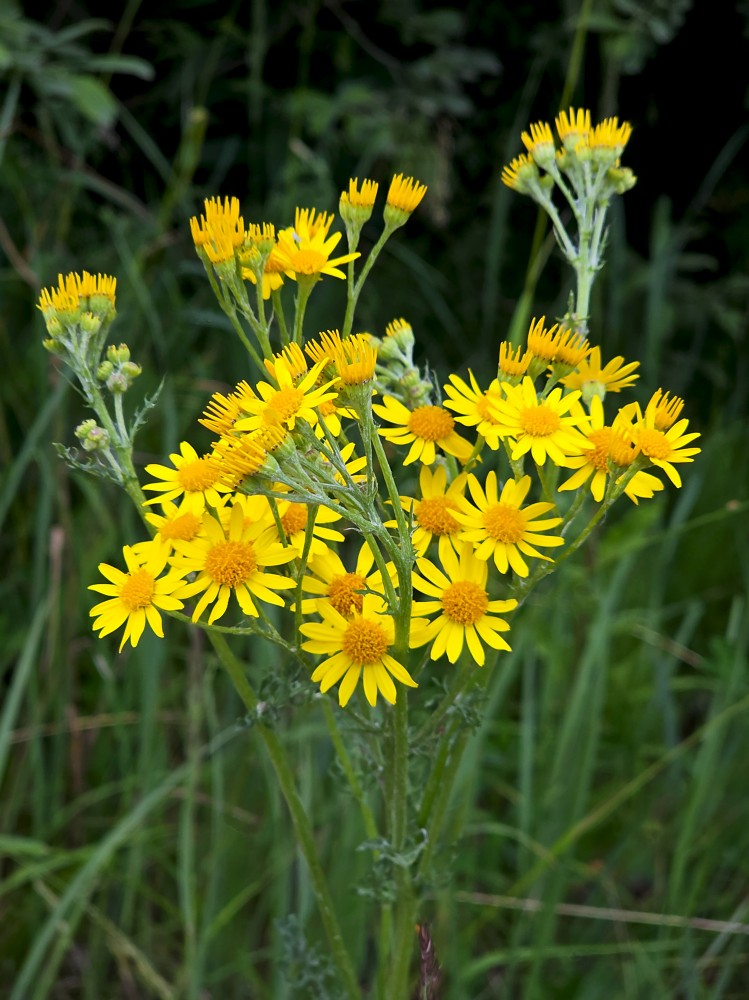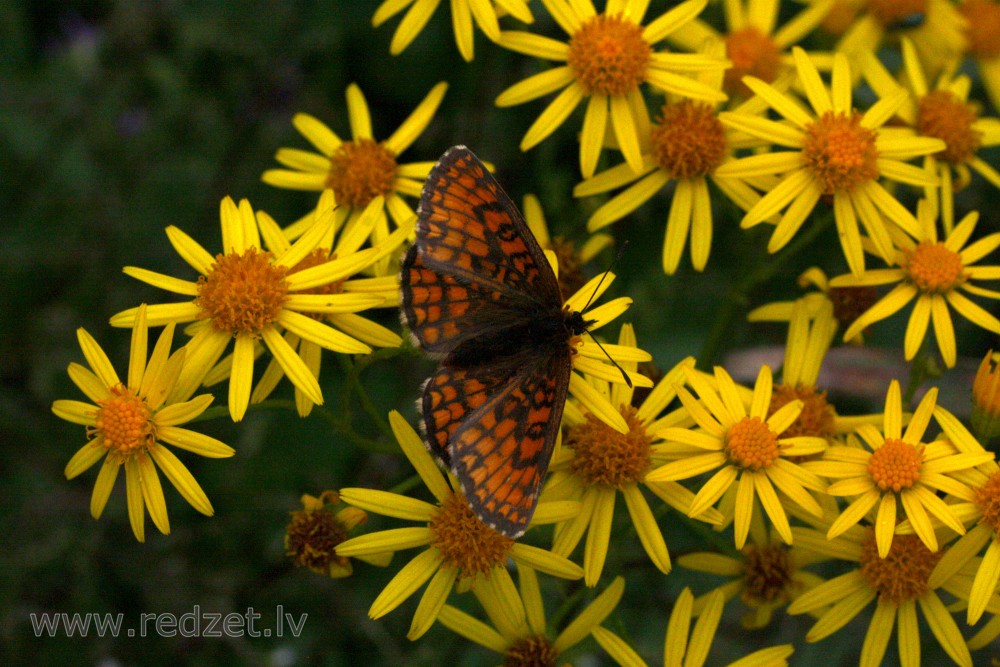Jacobaea vulgaris
Jacobaea vulgaris, syn. Senecio jacobaea,is a very common wild flower in the family Asteraceae that is native to northern Eurasia, usually in dry, open places, and has also been widely distributed as a weed elsewhere.
Common names include ragwort, common ragwort, stinking willie, tansy ragwort, benweed, St. James-wort, stinking nanny/ninny/willy, staggerwort, dog standard, cankerwort, stammerwort. In the western United States it is generally known as tansy ragwort, or tansy, though its resemblance to the true tansy is superficial.
Although the plant is often unwanted by landowners because it is considered a weed by many, it provides a great deal of nectar for pollinators. It was rated in the top 10 for most nectar production (nectar per unit cover per year) in a UK plants survey conducted by the AgriLand project which is supported by the UK Insect Pollinators Initiative. It also was the top producer of nectar sugar in another study in Britain, with a production per floral unit of (2921 ± 448μg).
Description
The plant is generally considered to be biennial but it has the tendency to exhibit perennial properties under certain cultural conditions (such as when subjected to repeated grazing or mowing). The stems are erect, straight, have no or few hairs, and reach a height of 0.3–2.0 metres (1 ft 0 in–6 ft 7 in). The leaves are pinnately lobed and the end lobe is blunt. The many names that include the word "stinking" (and Mare's Fart) arise because of the unpleasant smell of the leaves. The hermaphrodite flower heads are 1.5–2.5 centimetres (0.59–0.98 in) diameter, and are borne in dense, flat-topped clusters; the florets are bright yellow. It has a long flowering period lasting from June to November (in the Northern Hemisphere).
Pollination is by a wide range of bees, flies and moths and butterflies. Over a season, one plant may produce 2,000 to 2,500 yellow flowers in 20- to 60-headed, flat-topped corymbs. The number of seeds produced may be as large as 75,000 to 120,000, although in its native range in Eurasia very few of these would grow into new plants and research has shown that most seeds do not travel a great distance from the parent plant.
en.wikipedia.org
https://en.wikipedia.org/wiki/Jacobaea_vulgaris
Continue reading
